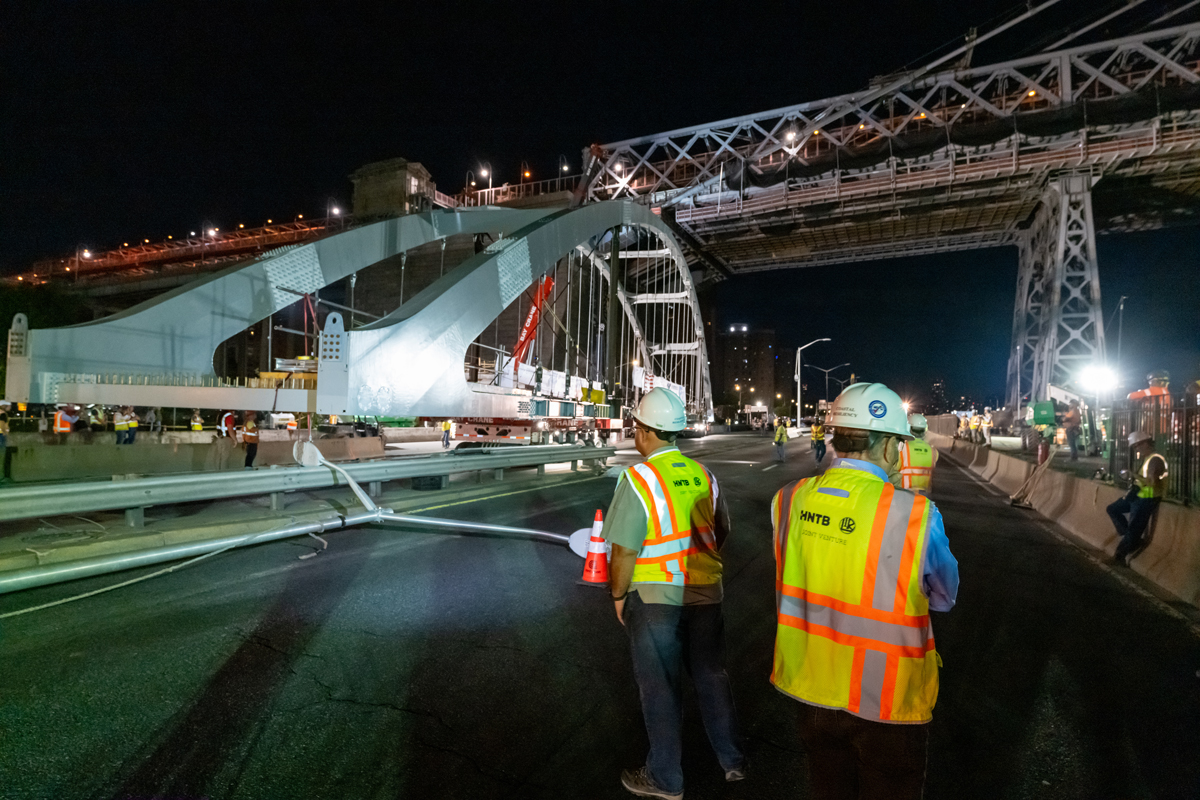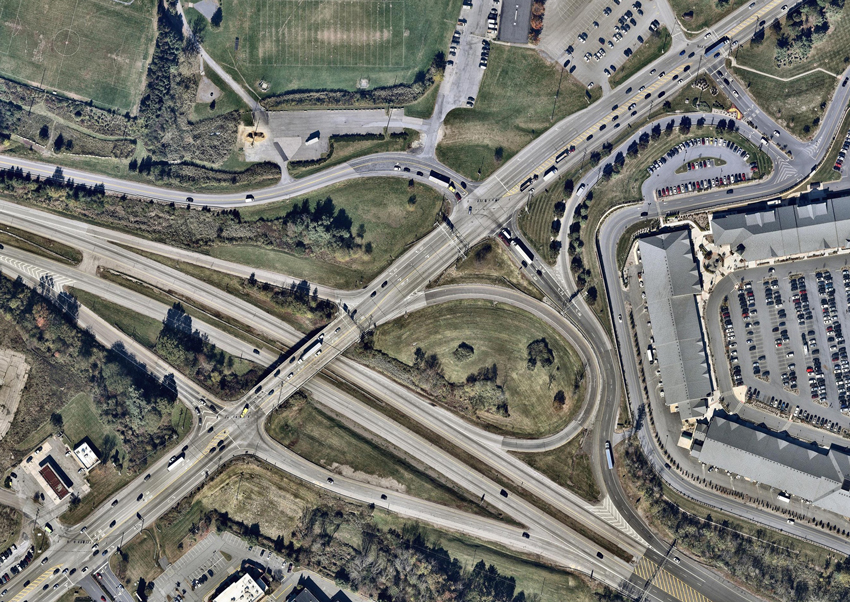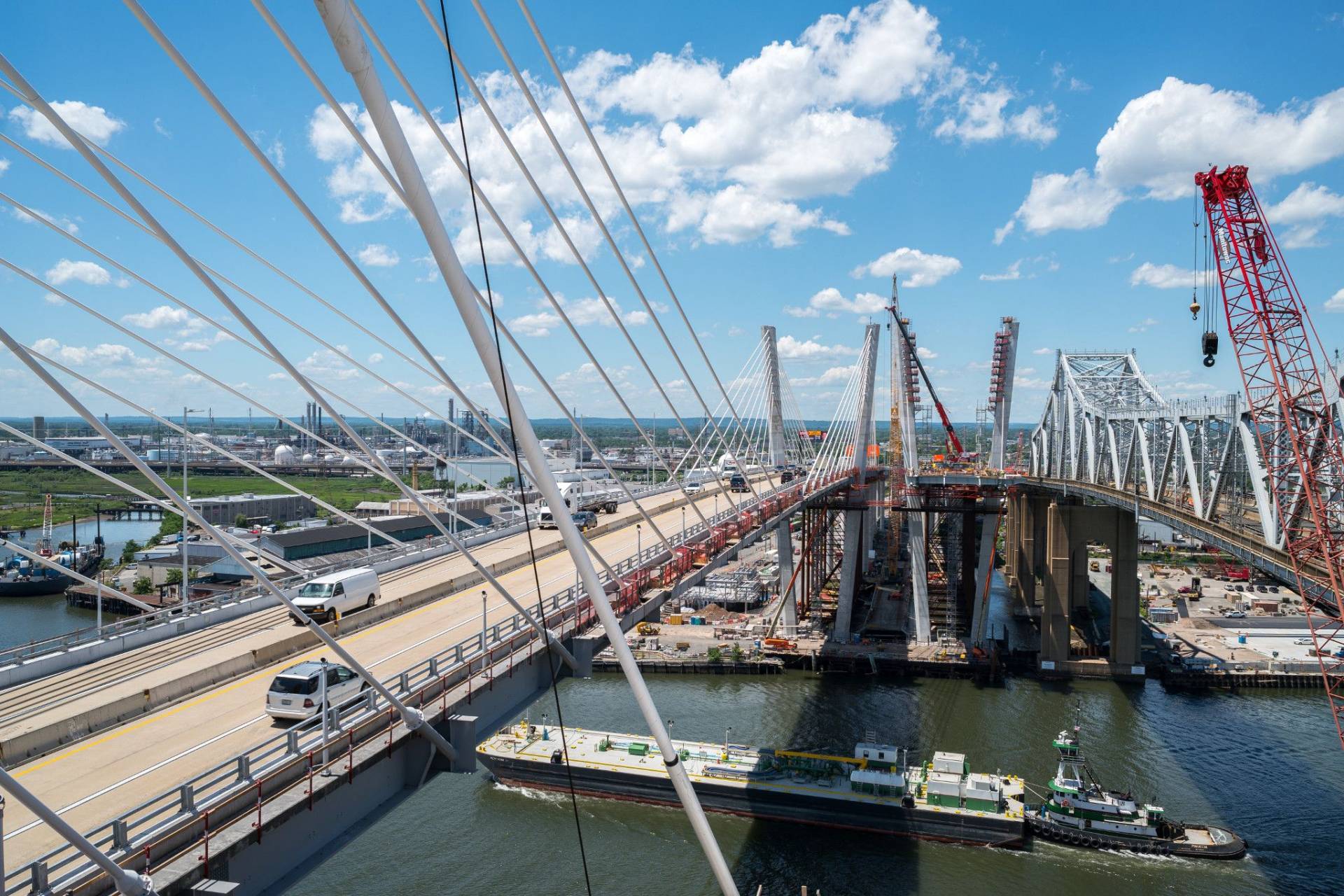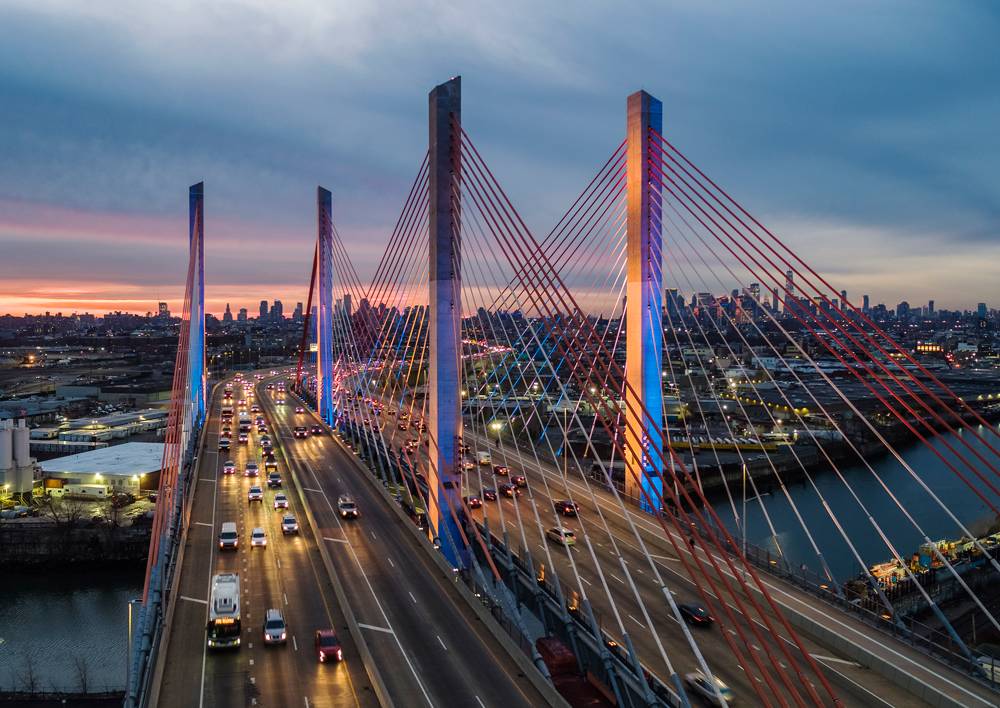
Advancing Traffic Engineering Methods in Urban Environments
Managing traffic during complex transportation projects in dense urban locations such as New York City requires a collaboration between a variety of stakeholders and experts who create innovative analysis methodologies and simulations that can reimagine scenarios for even more out-of-the-box traffic engineering solutions.
By Dr. Babu K. Veeregowda, PE, PTOE | HNTB
Each project is unique, and selecting the best approach to traffic data collection, analysis, and management as part of infrastructure design requires careful analysis and understanding of the proposed options or methods. There are numerous modeling tools and technologies available to help make these decisions. Using technologies or tools that can synthesize traffic patterns and information into realistic data points helps create multiple views for planning purposes, aiding decision-making.
Some examples of these methods and their applications used in real world projects are as follows:
Advanced Data Collection Validates Accelerated Bridge Construction
The Accelerated Bridge Construction (ABC) method is a bridge construction approach that utilizes innovative planning, design, materials and construction techniques to enhance safety and cost-effectiveness. According to the U.S. Department of Transportation Federal Highway Administration, this method aims to reduce onsite construction time for new bridges as well as for the replacement and rehabilitation of existing ones.
An example is the Delancey Street Bridge installation as part of the East Side Coastal Resiliency project in New York City. The installation required the full closure of the FDR Drive, one of Manhattan’s few controlled access roadways, for an unprecedented ten-hour period; however, the state’s regulations stipulated full closures of the FDR Drive could last no longer than five hours. To address this, a robust origin-destination and traffic analysis study was necessary to prove the installation was possible without causing significant traffic disruption.
Advanced technology, including data collection software that anonymously tracks commuter movements in real-time using cell phone data, provides the opportunity to determine how much traffic could detour onto alternate routes and/or away from the area entirely. This allowed the development of scenarios to effectively reroute commuters and offer alternative transit options. Predictive analytics helped the project team manage traffic flow, minimizing disruptions and demonstrating the benefits of a longer highway closure than had ever been attempted before in Manhattan.
After reviewing the team’s findings, the New York State Department of Transportation (NYSDOT) and the NYC Department of Design and Construction (NYCDDC) approved extending the closure time to 10 hours. This extension enabled the successful installation of the bridge in one evening, reducing the project schedule and minimizing traffic impact by limiting the installation to one overnight period. The success of this approach set a new standard in the industry, paving the way for other projects to adopt similar practices in traffic engineering.

“It truly was an out-of-the-box solution to address the complexity of construction of three pedestrian bridges on the busy highway for the new East Side Coastal Resiliency (ESCR) project, [especially regarding] on your repeated attempts of reducing community impact of closing the FDR Drive. Satisfying the NYC Office of Construction Mitigation & Coordination (OCMC) in reducing the standard Department of Transportation (DOT) 5 hr closures from a cumbersome 81 times to a mere 3 actual, and 3 incidental 10-hour overnight closures was nothing short of outstanding, especially with providing any and all information OCMC needed to feel satisfied in approving this request.”

“It truly was an out-of-the-box solution to address the complexity of construction of three pedestrian bridges on the busy highway for the new East Side Coastal Resiliency (ESCR) project, [especially regarding] on your repeated attempts of reducing community impact of closing the FDR Drive. Satisfying the NYC Office of Construction Mitigation & Coordination (OCMC) in reducing the standard Department of Transportation (DOT) 5 hr closures from a cumbersome 81 times to a mere 3 actual, and 3 incidental 10-hour overnight closures was nothing short of outstanding, especially with providing any and all information OCMC needed to feel satisfied in approving this request.”
Innovative Interchange Designs Provide Operational, Safety and Environmental Benefits
When designing traditional interchanges near major travel destinations, space is a significant consideration as these structures are often elevated and require substantial area. Additionally, interchange movements at these high-volume locations require expensive grade separations and/or multi-phase traffic signals. The Diverging Diamond Interchange (DDI) is notably compact and optimizes traffic flow. In this concept, traffic temporarily crosses to the opposite side of the road allowing vehicles to move through intersections with high volumes without constructing additional lanes. It also minimizes the
number of traffic signal phases required at each signal as well as the number of vehicle conflict points.
A notable application of this approach was used at the Woodbury Commons Mall, the largest outdoor mall in New York State. Implementing the DDI method to alleviate traffic issues in this area significantly reduced congestion while optimizing construction time and schedule as well as environmental conditions.

“The traffic operation of the new DDI at the Route 17/Route 32 Exit 131 interchange has been observed to work very well over the past year. This is only the second such interchange in New York State and it seems very well suited for this type of location which serves a major regional retail destination, a local school district with multiple buildings and facilities in close proximity, and thousands of daily commuters. Even before the onset of the COVID-19 pandemic, operation through the Route 32 corridor had improved significantly over the previous design. This innovative interchange design could be beneficial for similar projects around the country.”
“The traffic operation of the new DDI at the Route 17/Route 32 Exit 131 interchange has been observed to work very well over the past year. This is only the second such interchange in New York State and it seems very well suited for this type of location which serves a major regional retail destination, a local school district with multiple buildings and facilities in close proximity, and thousands of daily commuters. Even before the onset of the COVID-19 pandemic, operation through the Route 32 corridor had improved significantly over the previous design. This innovative interchange design could be beneficial for similar projects around the country.”

Using Static Analysis and Microsimulation to Accurately Measure Construction Conditions
All-Electronic Tolling (AET) is used to modernize toll bridges by integrating utility, vehicle, highway, and communication infrastructure. However, the process is complex due to the involvement of multiple stakeholders who own, manage and maintain these bridges.
An example is the transition of the Port Authority of New York and New Jersey (PANYNJ)’s Goethals Bridge in New York and New Jersey from manual to electronic operations, where the project team needed to make sure traffic queues didn’t clog and cause spillback.
To address this issue, an innovative solution was employed. During construction, various alternatives were considered, including combinations of E-ZPass-only and manually operated lanes to mitigate traffic congestion. The project team used a two-pronged approach to optimize traffic flow and the construction schedule. The first step was to use static modeling to eliminate most of the alternatives, while the second step involved fine-tuning the preferred alternative using an animated traffic simulation to visualize traffic patterns before actual implementation. In this case, the PANYNJ performed an after study during implementation and discovered that the simulation accurately predicted traffic behavior, enabling precise adjustments and confirming that the on-site queues aligned with the animated simulation results. The PANYNJ specifically requested that the transportation management plan from this project be used as their template for all future transportation management plans.


Innovative Solutions in Complex Environments
The Kosciuszko Bridge, part of the Brooklyn-Queens Expressway, is a crucial link in the New York City transportation network. Managed by the New York State Department of Transportation (NYSDOT), the bridge carries the Brooklyn-Queens Expressway over Newtown Creek and thus its operational efficiency is paramount, and typically, lane closures are avoided to prevent major traffic delays, especially during peak hours. However, for the necessary construction work, closing one lane of the Brooklyn-Queens Expressway became essential when a need arose to further improve the schedule and quality of construction.
The project team approached the situation by conducting comprehensive traffic analysis and modeling for the expansive area from adjacent Brooklyn and Queens neighborhoods into Manhattan. Strategies were devised to mitigate local and regional traffic impacts and to manage congestion. By carefully managing traffic flow and avoiding excessive queues and delays, it allowed contractors to expedite construction despite the lane closure. This approach accelerated the construction schedule and improved the quality of the work. After reviewing the analysis, NYSDOT approved the lane closure, leading to enhanced project schedules and cost savings. The results demonstrated that effective traffic management and strategic planning could achieve both superior work quality and efficiency, even in complex urban environments.
Conclusion
Innovative, non-traditional approaches to infrastructure design, data collection, and transportation management can advance complex projects. By leveraging data, best practices, and collaboration with clients, stakeholders, and communities, these strategies enhance safety, efficiency, and cost-effectiveness in the design and construction phases.
ABOUT THE AUTHOR
 Dr. Babu K. Veeregowda, PE, PTOE
Dr. Babu K. Veeregowda, PE, PTOE
HNTB Corporation
Dr. Babu K. Veeregowda, PE, PTOE is the vice president and chief of HNTB’s Northeast Division for traffic engineering at HNTB. With over 25 years of experience in management, complex engineering analysis, and design solutions, he is a recognized leader in the transportation engineering industry.
Dr. Veeregowda’s expertise in transportation engineering modeling and design is marked by his ability to deliver innovative, cost-effective, and sustainable design solutions to high-profile infrastructure projects. He holds licenses as a professional engineer (PE) and a professional traffic operations engineer (PTOE), and serves as an adjunct professor at the New Jersey Institute of Technology (NJIT) and as a distinguished guest lecturer at NYU.
